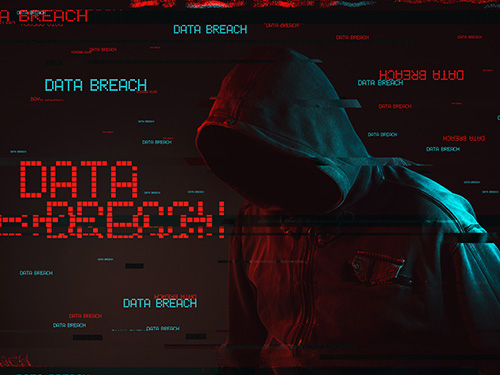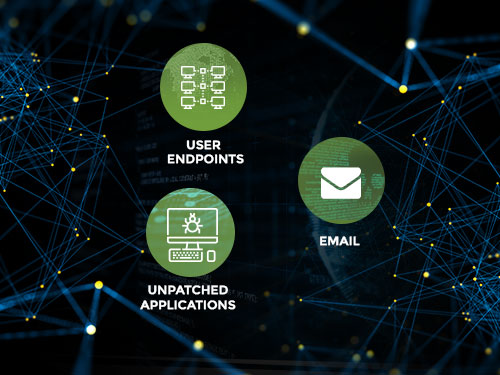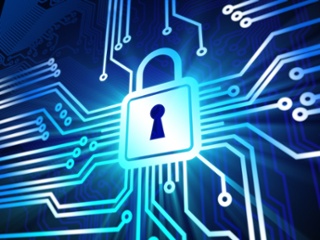Not that long ago, the wide-area network (WAN) was used to connect a few branch locations to headquarters and headquarters to the public Internet. Today, the WAN has become the foundation of operations in a wide range of industries.
The cyber-threat landscape is always changing and evolving. Hackers are notoriously dynamic, constantly improving their tactics and tools to bypass the latest security countermeasures. Organizations that want to minimize their exposure to cyber threats need to be be well-informed and up to date.
As of July 20, 2018, tugboat and towboat operators must comply with new Coast Guard regulations designed to improve safety. Published in the Code of Federal Regulations at 46 CFR Subchapter M, the rules require that towing vessel operators submit to an annual Coast Guard inspection or implement an approved towing safety management system (TSMS). Many operators are deploying onboard vessel management systems to help meet these requirements, but are struggling to maintain the real-time data communications needed to make the management systems work properly and ensure compliance.
There’s a reason why more than 90 percent of targeted security threats originate in email. Human beings are the weakest link in the security chain. If an email gateway is like a brick wall that surrounds the network and only lets in a small percentage of threats, a human being is often like a turnstile that only requires a gentle push to gain entry.
Experts say that a security breach is virtually inevitable — that it’s a matter of “when” not “if.” However, rapid detection and response to a security incident can greatly reduce its impact, as GDS proved recently when it stopped a ransomware attack.
Earlier this year, an attack was carried out against IT service providers. This attack was so damaging that the Department of Homeland Security and FBI Cyber Unit issued high priority alerts. It was the kind of attack that IT providers dread...and it quickly revealed who among them was prepared and who was not.
Given that time and budgets are always limited, organizations are often reluctant to upgrade IT infrastructure that seems to be working just fine. If it ain’t broke, don’t fix it. But the fact that something appears to be working isn’t enough in today’s cyber threat climate.
According to the Center for Strategic and International Studies, cybercrime costs the U.S. economy about $100 billion each year. As soon as you think you have one threat properly defended, a new, more dangerous threat emerges. This is why organizations continue to make major investments in IT security, to prevent data breaches and minimize their impact and to satisfy increasingly complex regulatory compliance requirements.
Many in-house IT teams are struggling to keep up with day-to-day administration and management tasks. The IT environment has become increasingly complex, encompassing a broad range of on-premises and cloud-based platforms. Growing numbers of users are accessing these systems with an array of mobile devices. An ever-increasing volume of data must be stored, protected and backed up. Organizations are under constant attack by a never-ending barrage of security threats.
There is no organization on the face of the earth, regardless of how sophisticated its security defenses may be, that is immune to a data breach.
IT systems should create value for your organization, drive operational efficiencies and support growth. Given the constantly evolving nature of technology, those objectives are always going to be moving targets. That’s why organizations should regularly engage in strategic IT planning to identify how technology assets are currently performing and where future investments will produce the most benefit.
Changing traffic patterns and bandwidth requirements are forcing organizations to rethink their WAN architectures and data transport options. In the past, most applications and resources were hosted in the corporate data center, and branch locations connected to headquarters in a hub-and-spoke architecture. Today, the WAN primarily supports Internet traffic and cloud access, making traditional designs costly and inefficient.
There’s no way to guard against every cybersecurity threat. Some of the largest enterprises in the world, with skilled IT teams and large budgets, have fallen victim to massive security breaches. There are simply too many devices and applications to protect, with new threats emerging every single day.
In our last post [Software-Defined WAN: Cheaper, Faster, More Secure], we discussed how software-defined WAN (SD-WAN) solutions enable you to reduce WAN cost and complexity while increasing performance, reliability and security. The software-defined component of SD-WAN lies in a smart centralized controller capable of differentiating and segmenting traffic and making routing decisions on the fly.
The IT industry is often guilty of hype and oversimplification. New technologies are marketed in a way that creates overinflated expectations, while the potential challenges associated with implementing and managing the technology are minimized. Software-defined WAN (SD-WAN) technology has, for the most part, lived up to the hype.
Software-defined WAN (SD-WAN) technology is being adopted at a phenomenal rate. IDC expects that 70 percent of enterprises will implement some form of SD-WAN within the next two years. As a result, the research firm predicts that the SD-WAN market will see a compound annual growth rate of more than 90 percent.
We often have conversations about Cyber Security, even with those that are not focused on the protection of systems and data. So little is known or understood that people are often unaware of the threats around them. Most people just don’t see them. In a discussion regarding the compromise of a student records platform at a school, a general attitude of “So what if some student records are changed?” How bad can that be? If we consider that these individuals will become adults with a credit history, then we can see that this could be the origin of an Identity Theft exploit. The focus of this white paper is to shed some light onto a very dark topic – Cyber Security.
Hybrid IT is a technique in which an enterprise uses both in-house and cloud based services to complete their entire pool of IT resources.
A security guard standing by the door, clear/concise document management policies, adequate lighting in the parking lot, and deadbolts on the doors – long gone are the days when these comprised a complete physical security solution for businesses looking to keep their employees and information safe from attacks. Though the tools for addressing physical security have changed with the rapid advancement of technology and connectivity in the digital age, the core concepts have remained the same. Simply stated, today’s business owners, much like their non-digital predecessors, must protect their assets if they are to mitigate against potentially catastrophic damages/losses that can occur as a result of a security breach.
By Wade Berzas, Sales Manager, Global Data Systems, Inc.
I must be honest, my customers rarely ask me for help with video surveillance and access control physical security solutions, until it’s too late! Face it, it’s not sexy, it doesn’t generate revenue, and nothing will ever happen to me, right?
Here are the top 5 reasons to consider physical security solutions for your office locations.
We say this all the time and it always bears repeating: You’ve worked too hard to establish yourself in business to lose it to inadequate security. Imagine all your hard work – and livelihood – gone in a flash because your business wasn’t properly secured. The heartache of losing everything you worked for is hard enough, but don’t let any loss be your fault as well. Is physical security best for your business? Let’s discuss it and get your business secured!
Almost everyone has a cell phone these days — from your little sister in elementary school all the way up to your grandmother. It’s hard to imagine life without these handheld devices, which allow us to do so much more than simply make phone calls.





















